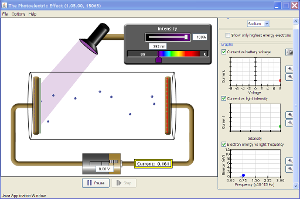- Day 79
- Use the photon theory and Compton's hypothesis to calculate the wavelength of a photon after it has been scattered as a result of a collision with an electron.
- Compton Scattering
- Notes
The Compton Effect is the quantum theory of the scattering of electromagnetic waves by
a charged particle in which a portion of the energy of the electromagnetic wave is given
to the charged particle in an elastic, relativistic collision. Compton scattering was
discovered in 1922 by Arthur H. Compton (1892-1962) while conducting research on the
scattering of x-rays by light elements. In 1922 he subsequently reported his experimental
and theoretical results and received the Nobel prize in 1927 for this discovery. His
theoretical explanation of what is now known as Compton scattering deviated from
classical theory and required the use of special relativity and quantum mechanics, both of
which were hardly understood at the time. When first reported, his results were
controversial, but his work quickly ...


